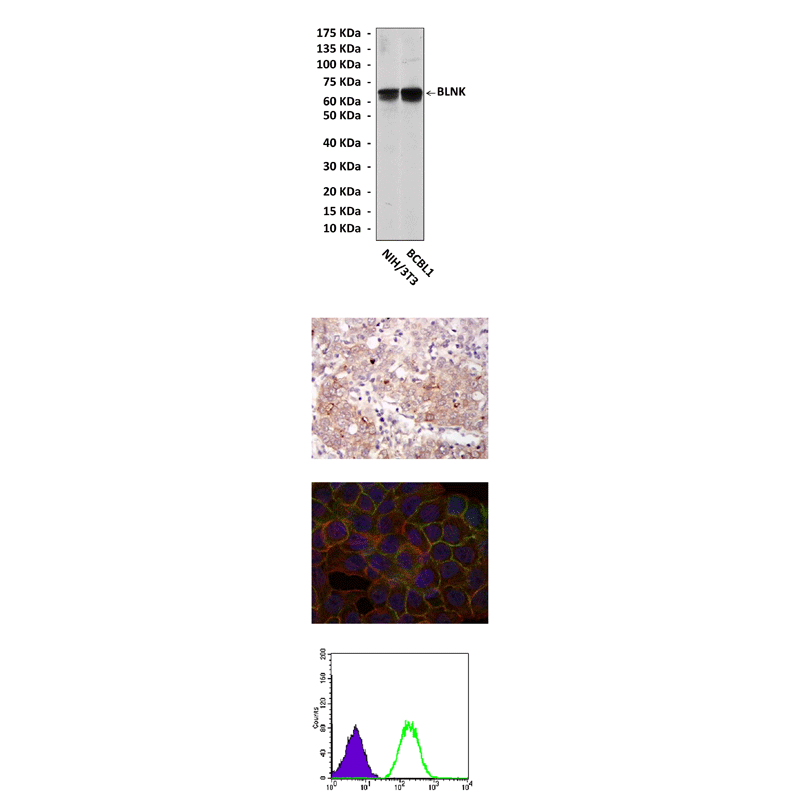Anti-BLNK: Mouse BLNK Antibody |
 |
BACKGROUND BLNK is a cytoplasmic linker or adaptor protein that plays a critical role in B cell function and development. It functions as a central linker protein that bridges kinases associated with the B-cell receptor (BCR) with a multitude of signaling pathways.1 The phosphorylation of five tyrosine residues is necessary for this protein to nucleate distinct signaling effectors following B cell receptor activation. It also plays a role in the activation of ERK/EPHB2, MAP kinase p38 and JNK, activation of NF-kB and NFAT, as well as AP1 activation. BLNK is an important regulator of BCR-mediated PLCG1 and PLCG2 activation and Ca2+ mobilization and is required for trafficking of the BCR to late endosomes.2 However; it does not seem to be required for pre-BCR-mediated activation of MAP kinase and phosphatidyl-inositol 3 (PI3) kinase signaling. It is critical in orchestrating the pro-B cell to pre-B cell transition and BCR-induced B-cell apoptosis. Mutations in this gene cause hypoglobulinemia and absent B cells, a disease in which the pro- to pre-B-cell transition is developmentally blocked. Deficiency in this protein has also been shown in some cases of pre-B acute lymphoblastic leukemia.3
REFERENCES
1. Fu, C. et al: Immunity 9:93-103, 1998
2. Wienands, J. et al: J. Exp. Med. 188:791-5, 1998
3. Nakayama, J. et al: Blood 113:1483-92, 2009
2. Wienands, J. et al: J. Exp. Med. 188:791-5, 1998
3. Nakayama, J. et al: Blood 113:1483-92, 2009
Products are for research use only. They are not intended for human, animal, or diagnostic applications.
Параметры
Cat.No.: | CP10415 |
Antigen: | Raised against recombinant human BLNK fragments expressed in E. coli. |
Isotype: | Mouse IgG1 |
Species & predicted species cross- reactivity ( ): | Human, Mouse, Rat |
Applications & Suggested starting dilutions:* | WB 1:1000 IP 1:25 - 1:50 IHC 1:50 - 1:200 ICC 1:50 - 1:200 FACS 1:50 - 1:200 |
Predicted Molecular Weight of protein: | 68 kDa |
Specificity/Sensitivity: | Detects BLNK proteins in various cell lysate. |
Storage: | Store at -20°C, 4°C for frequent use. Avoid repeated freeze-thaw cycles. |
*Optimal working dilutions must be determined by end user.
Документы
Информация представлена исключительно в ознакомительных целях и ни при каких условиях не является публичной офертой








